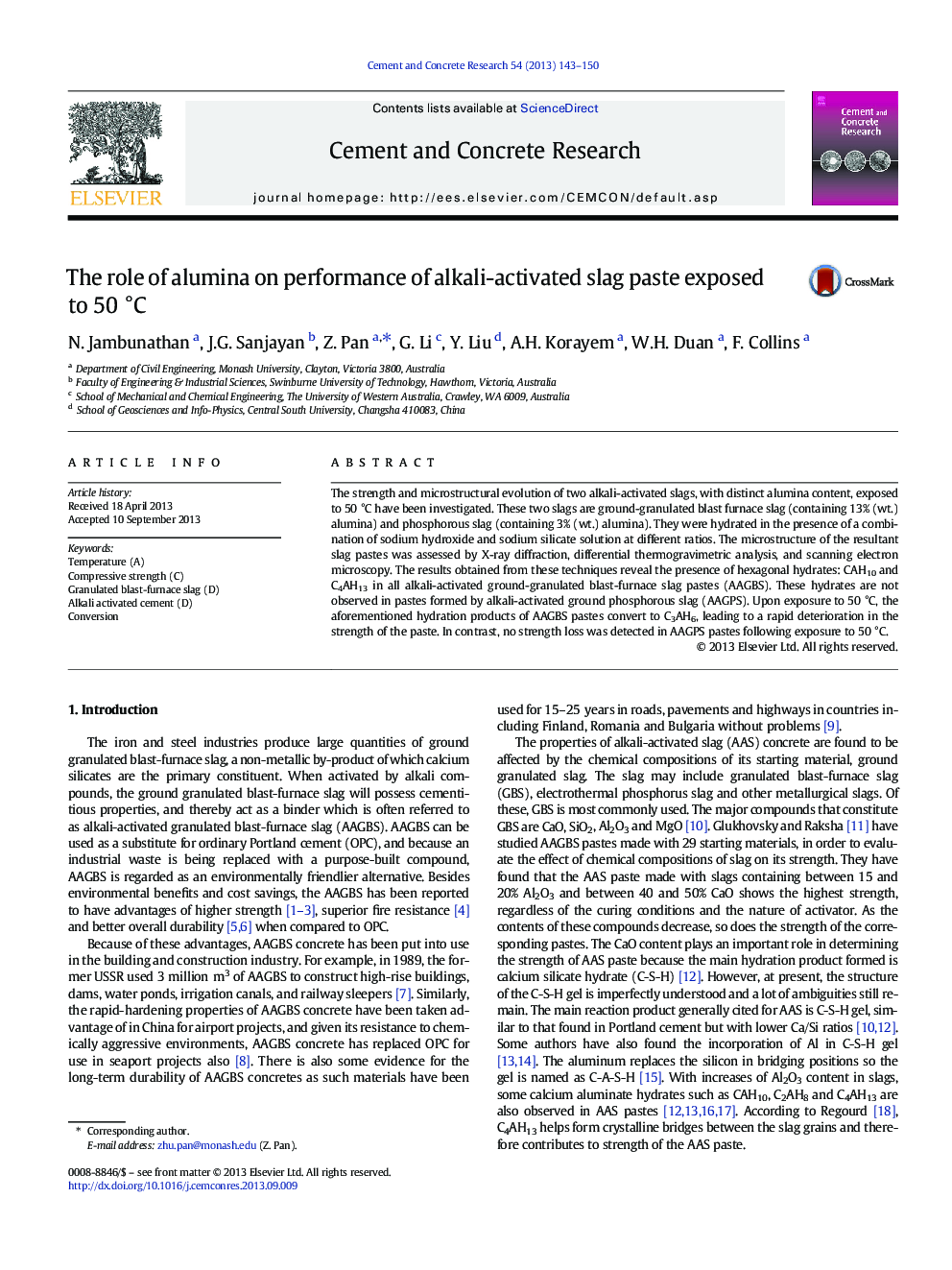| Article ID | Journal | Published Year | Pages | File Type |
|---|---|---|---|---|
| 1456450 | Cement and Concrete Research | 2013 | 8 Pages |
•Strength of alkali-activated slag (AAS) pastes after exposure to 50 °C is studied.•AAS pastes with high alumina content lose strength after the exposure.•C4AH13 and CAH10 form in these AAS pastes.•Conversion of these calcium alumina hydrates is associated with the strength loss.•AAS pastes with low alumina content maintain its strength after the exposure.
The strength and microstructural evolution of two alkali-activated slags, with distinct alumina content, exposed to 50 °C have been investigated. These two slags are ground-granulated blast furnace slag (containing 13% (wt.) alumina) and phosphorous slag (containing 3% (wt.) alumina). They were hydrated in the presence of a combination of sodium hydroxide and sodium silicate solution at different ratios. The microstructure of the resultant slag pastes was assessed by X-ray diffraction, differential thermogravimetric analysis, and scanning electron microscopy. The results obtained from these techniques reveal the presence of hexagonal hydrates: CAH10 and C4AH13 in all alkali-activated ground-granulated blast-furnace slag pastes (AAGBS). These hydrates are not observed in pastes formed by alkali-activated ground phosphorous slag (AAGPS). Upon exposure to 50 °C, the aforementioned hydration products of AAGBS pastes convert to C3AH6, leading to a rapid deterioration in the strength of the paste. In contrast, no strength loss was detected in AAGPS pastes following exposure to 50 °C.
